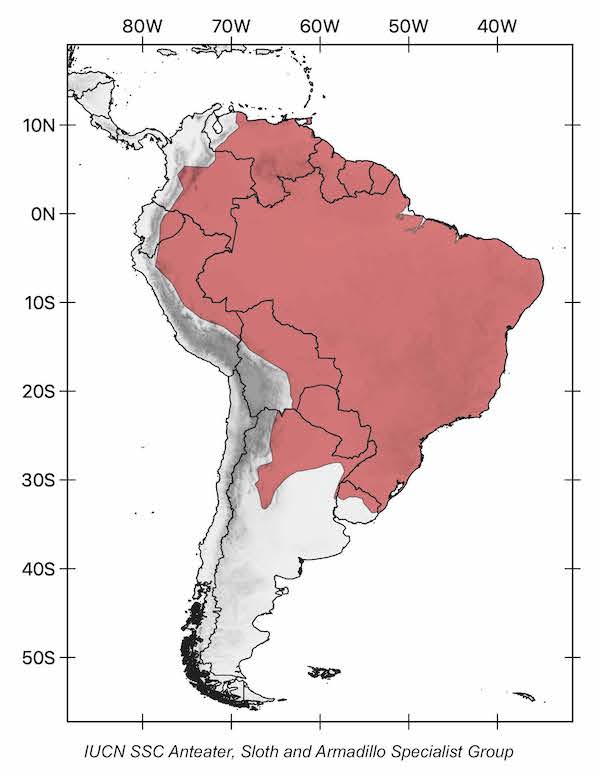Southern Tamandua
(Tamandua tetradactyla)
other common names
Collared anteater
Lesser anteater
Vested anteater
Golden anteater
Taxonomy
Order: Pilosa
Family: Myrmecophagidae


description
This medium-sized anteater has a head-body length of 47–77 cm and a prehensile tail of 40–67 cm. It weighs between 3.5 and 8.4 kg. The snout is not as long as in giant anteaters, but just like its larger relative, it has a small, toothless mouth, a long tongue (of up to 40 cm), small eyes, and rounded ears. Southern tamanduas can be golden, brownish or black, and they may have a complete or partial black vest. There are four clawed digits on the forefeet, with the third one bearing a prominent claw that they use to open ant and termite nests, as well as for defense. The pad of their hand is composed of fibrous tissue that protects it against the tips of the claws while they are walking.

diet
Southern tamanduas feed primarily on ants and termites, which they locate by scent both on the ground and in trees. They may also feed on bees and honey.

range
The southern tamandua occurs east of the Andes from Colombia, Venezuela, Trinidad Island, and the Guianas, south through Ecuador, Peru, Bolivia, Brazil and Paraguay to northern Uruguay and northern Argentina.

Population trend
Unknown.

curious facts
The name Tamandua comes from the language of the Tupi, an indigenous tribe from the Brazilian Amazon River valley, and means ant-catcher.

threats
In some portions of its range it is hunted for meat, attacked by domestic dogs, or sold as a pet species. The international pet trade of southern tamanduas is an increasing cause of concern, as the individuals for the pet trade are extracted from the wild and mortality rates are very high before they reach the pet market. Habitat loss, degradation and fragmentation, wildfires, and especially road traffic represent major threats in some portions of its range. In Uruguay, T. tetradactyla is affected by habitat loss due to land use change.

HaBITAT and ECOLOGy
This species is adaptable to a variety of habitats, including gallery forests adjacent to savannas, lowland and montane moist tropical rain forest, as well as mangroves and coastal environments, such as restingas. It also occurs in degraded or disturbed forests, forest fragments, periurban forests and even urban settings.
It may be nocturnal, diurnal, or crepuscular depending on the availability of its prey and environmental temperature. Tamandua tetradactyla is a relatively common species. Although there are few estimates of population density for this species, they vary from between 0.43 and 9 individuals/km2.

reproduction
Southern tamanduas become reproductively active at two years of age. A single young of about 390 grams is born after a pregnancy of around 160 days. Lactation lasts about 6 months.

conservation status
Tamandua tetradactyla is listed as Least Concern in view of its wide distribution, presumed large population, its occurrence in a number of protected areas, and because it is unlikely to be declining fast enough to qualify for listing in a threatened category.